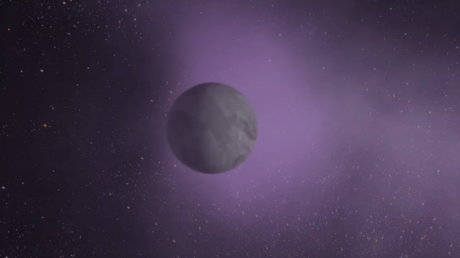‘Mini-Neptunes’ evolving into ‘super-Earths’ spotted – studies
US researchers have detected hydrogen and helium leaks at two distant “mini-Neptunes,” suggesting they are slowly becoming “super-Earths” Read Full Article at RT.com

Studies of ‘evaporating atmospheres’ at two distant ‘mini-Neptune’ exoplanets appear to confirm the theory that they eventually become ‘super-Earths’
Astronomers have discovered two separate instances of “mini-Neptune” planets whose atmospheres are being stripped away by solar radiation “like steam from a pot of boiling water,” suggesting that they are transforming into bodies known as “super-Earths.”
The findings, published in two recent papers in The Astronomical Journal, help shed light on how mini-Neptune exoplanets – which orbit stars beyond our solar system – are formed and their evolution. These worlds are smaller and denser than the planet Neptune, with large rocky cores surrounded by a thick gas atmosphere thought to be composed of hydrogen and helium.
According to scientific theory, a mini-Neptune close enough to its star would be bombarded by X-ray and ultraviolet radiation. Over several hundred million years, it would slowly lose its gas atmosphere as it developed into a rocky ‘super-Earth’ – which can be about 1.75 times the Earth’s size. Mini-Neptunes are between two and four times larger than our planet.
Only a few planets with sizes between these two exoplanet types have been found, which suggests that mini-Neptunes eventually become super-Earths.
While the researchers “suspected that young, small mini-Neptunes must have evaporating atmospheres,” the studies’ lead author, Michael Zhang, a graduate student at California Institute of Technology (Caltech), noted that “nobody had ever caught one in the process of doing so until now.”
In the new studies, Caltech astronomers examined one of two mini-Neptune planets in the ‘TOI 560’ star system, situated some 103 light-years away from Earth. They also used NASA’s Hubble Space Telescope to study two more mini-Neptunes orbiting the ‘HD 63433’ star, some 73 light-years away.
The team found atmospheric gas escaping from both the innermost mini-Neptune in TOI 560 (named TOI 560.01) and the outermost mini-Neptune in HD 63433 (called HD 63433 c) – hinting at their evolution into super-Earths. Signatures of helium were detected in TOI 560.01’s case, while hydrogen signatures were observed in HD 63433 c.
READ MORE: Scientists announce discovery on ‘very rare’ planet
“The speed of the gasses provides the evidence that the atmospheres are escaping. The observed helium around TOI 560.01 is moving as fast as 20 kilometers per second, while the hydrogen around HD 63433 c is moving as fast as 50 kilometers per second,” Zhang said, adding that the planets’ gravity was “not strong enough to hold on to such fast-moving gas.”
Interestingly, the gas lost from TOI 560.01 was found to be flowing toward its star – the opposite of what “most models predict,” said co-author Professor Heather Knutson. Further studies will show if this phenomenon is an anomaly among mini-Neptunes.
















